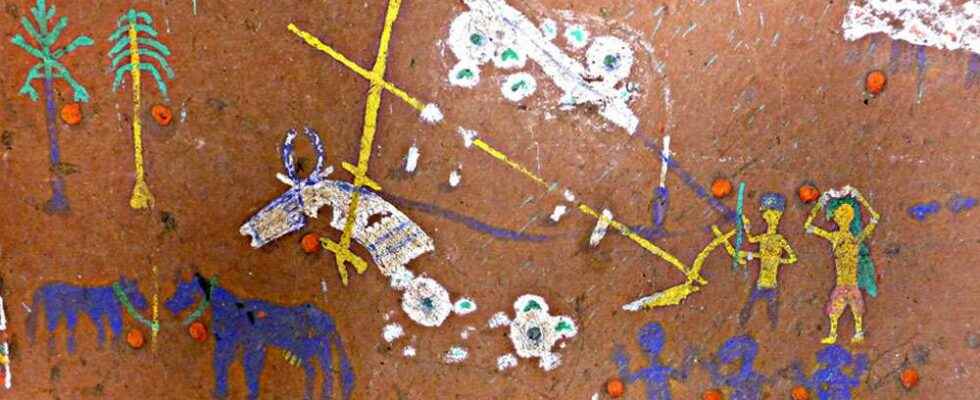Two great specialists in parietal art, Jean Clottes and Meenakshi Dubey-Pathak, regularly visit the state of Madhya Pradesh in central India, in search of decorated caves. They study the cave paintings, often spectacular, some of which date back more than 10,000 years.
One of the major interests ofrock art of the region, particularly abundant but little known because it is located in uninhabited territories, is that its cultural and natural context has been largely preserved, which has become very rare. It is thus possible to consider what happened in the local tribes and to discover the persistence of ancestral traditions which may have to do with art and explain the underlying reasons.
The research – and the discoveries – made with the tribes to which we had exceptional access (Korkus, Gonds, Kols, Bhils) focused on two major points. On the one hand, on the traditional forms of art still in use today, for example for funeral ceremonies (gathas, or stelae, of the Korkus and Gonds) or propitiatories in the houses (spectacular pitheraslarge wall paintings of the Bhils), which have analogies – and allow comparisons – with rock art.
Rock and tribal art: the power of images
On the other hand, we noted that ceremonies, with deposits ofofferings, still took place in certain painted shelters, which no one had suspected until then. Thanks to our contacts, we have been able to collect detailed, totally unpublished testimonies on these endangered practices. What emerges most clearly is the beneficial power attributed to images. It is through such images dedicated to spirits and gods that the tribes seek protection, through their designs and the practices that accompany them.
In this file, we will discover excerpts from the book Images for the gods. They show the richness and diversity of the tribal art of the center of india, with in particular images of war, representations of hunting and even dance. Good reading.
